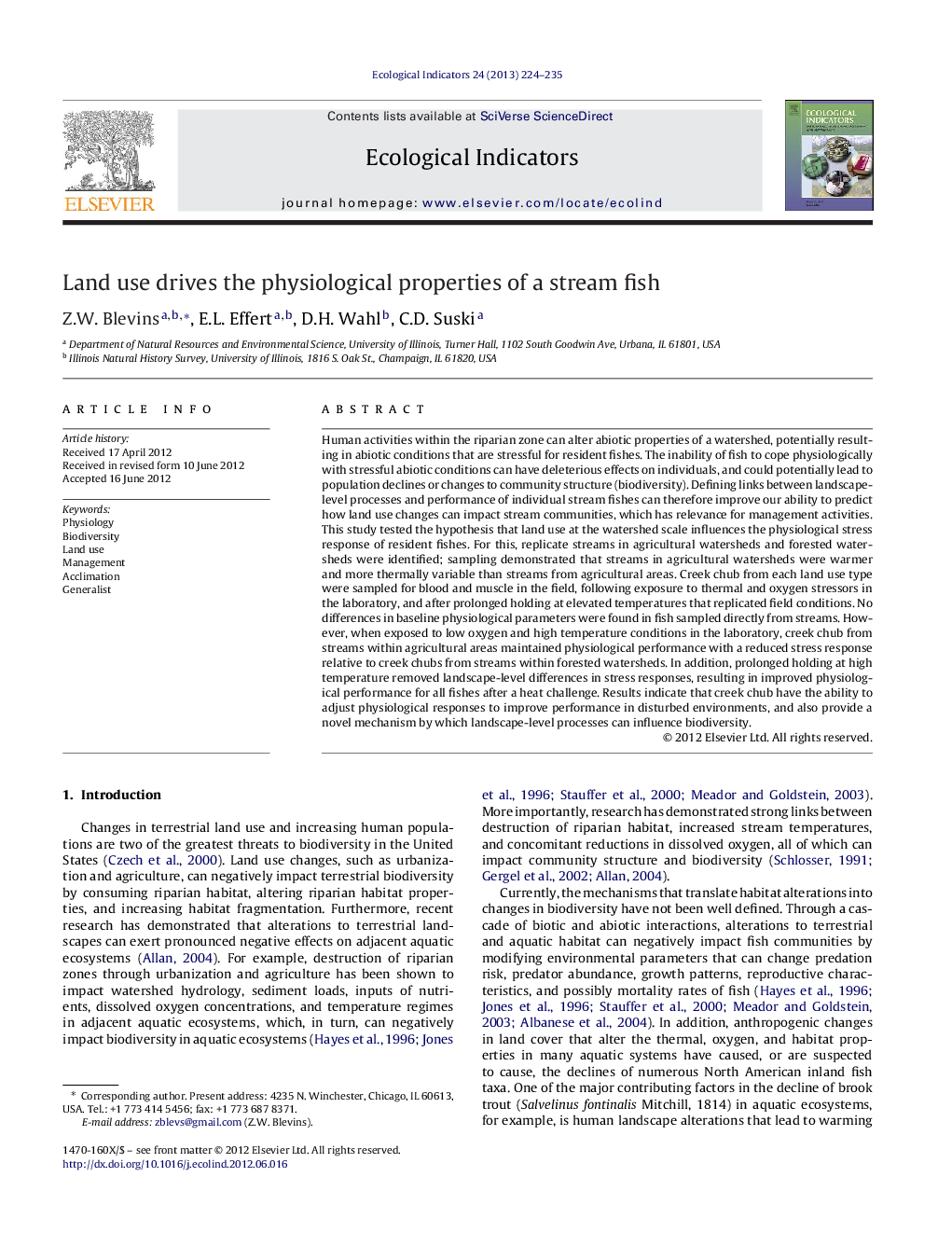| Article ID | Journal | Published Year | Pages | File Type |
|---|---|---|---|---|
| 4373639 | Ecological Indicators | 2013 | 12 Pages |
Human activities within the riparian zone can alter abiotic properties of a watershed, potentially resulting in abiotic conditions that are stressful for resident fishes. The inability of fish to cope physiologically with stressful abiotic conditions can have deleterious effects on individuals, and could potentially lead to population declines or changes to community structure (biodiversity). Defining links between landscape-level processes and performance of individual stream fishes can therefore improve our ability to predict how land use changes can impact stream communities, which has relevance for management activities. This study tested the hypothesis that land use at the watershed scale influences the physiological stress response of resident fishes. For this, replicate streams in agricultural watersheds and forested watersheds were identified; sampling demonstrated that streams in agricultural watersheds were warmer and more thermally variable than streams from agricultural areas. Creek chub from each land use type were sampled for blood and muscle in the field, following exposure to thermal and oxygen stressors in the laboratory, and after prolonged holding at elevated temperatures that replicated field conditions. No differences in baseline physiological parameters were found in fish sampled directly from streams. However, when exposed to low oxygen and high temperature conditions in the laboratory, creek chub from streams within agricultural areas maintained physiological performance with a reduced stress response relative to creek chubs from streams within forested watersheds. In addition, prolonged holding at high temperature removed landscape-level differences in stress responses, resulting in improved physiological performance for all fishes after a heat challenge. Results indicate that creek chub have the ability to adjust physiological responses to improve performance in disturbed environments, and also provide a novel mechanism by which landscape-level processes can influence biodiversity.
